Puzzle Print-Out
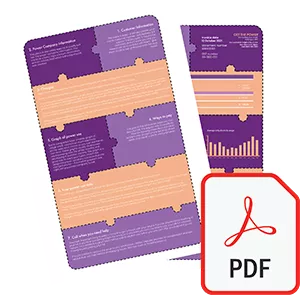
This document is an A3 print out ready version of the power bill puzzle. Please print double sided.
Click here or on the icon to download the puzzle print-out (PDF, 686 KB) »
* The contact details used on this page, including 0800 numbers, are for illustration purposes only.
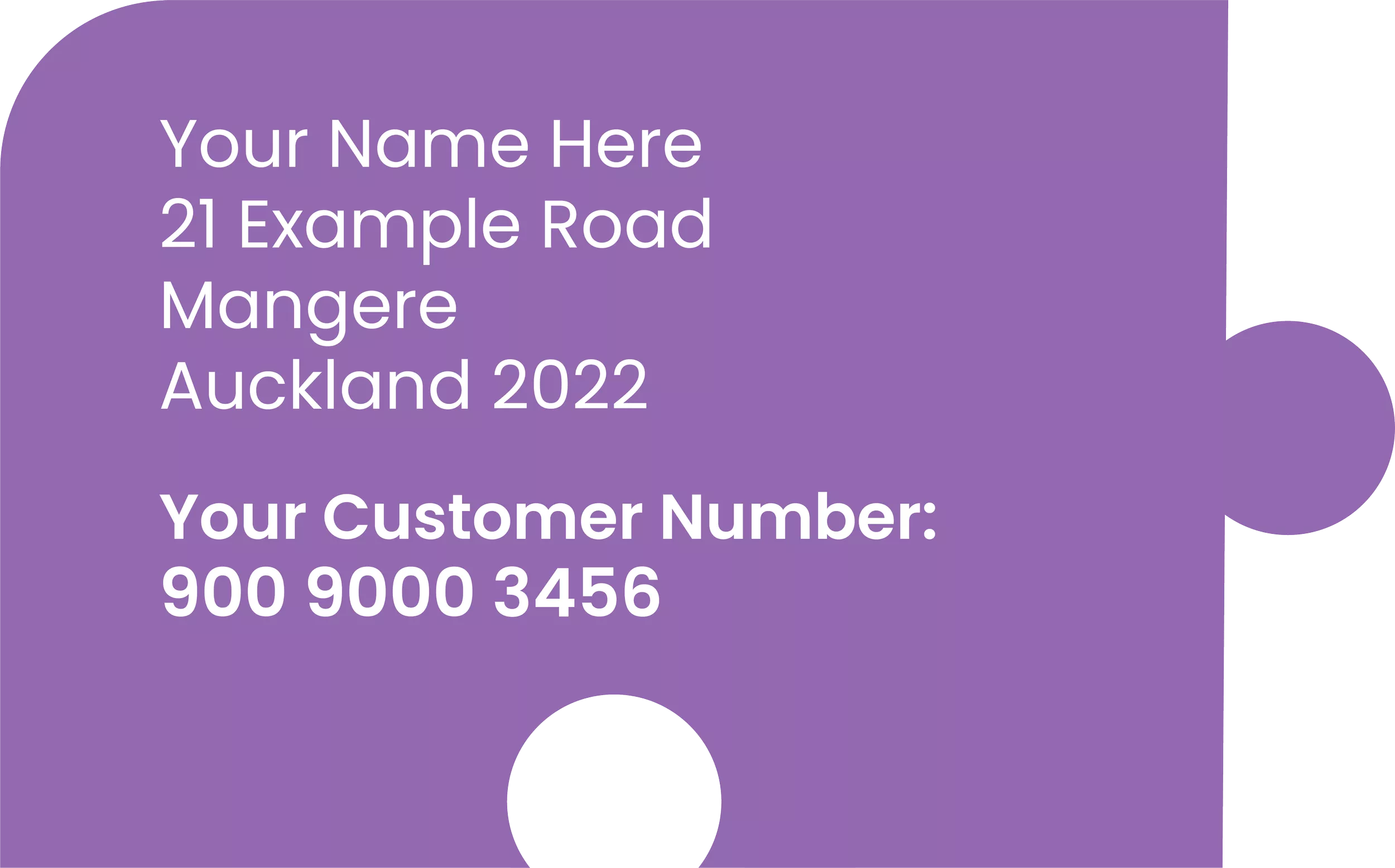
This piece is easy - it should contain your name, customer number, and address. If it says to 'The Occupier' it means the company doesn't know you and you haven't set up a contract with them- give them a call to set up the best plan for your needs.
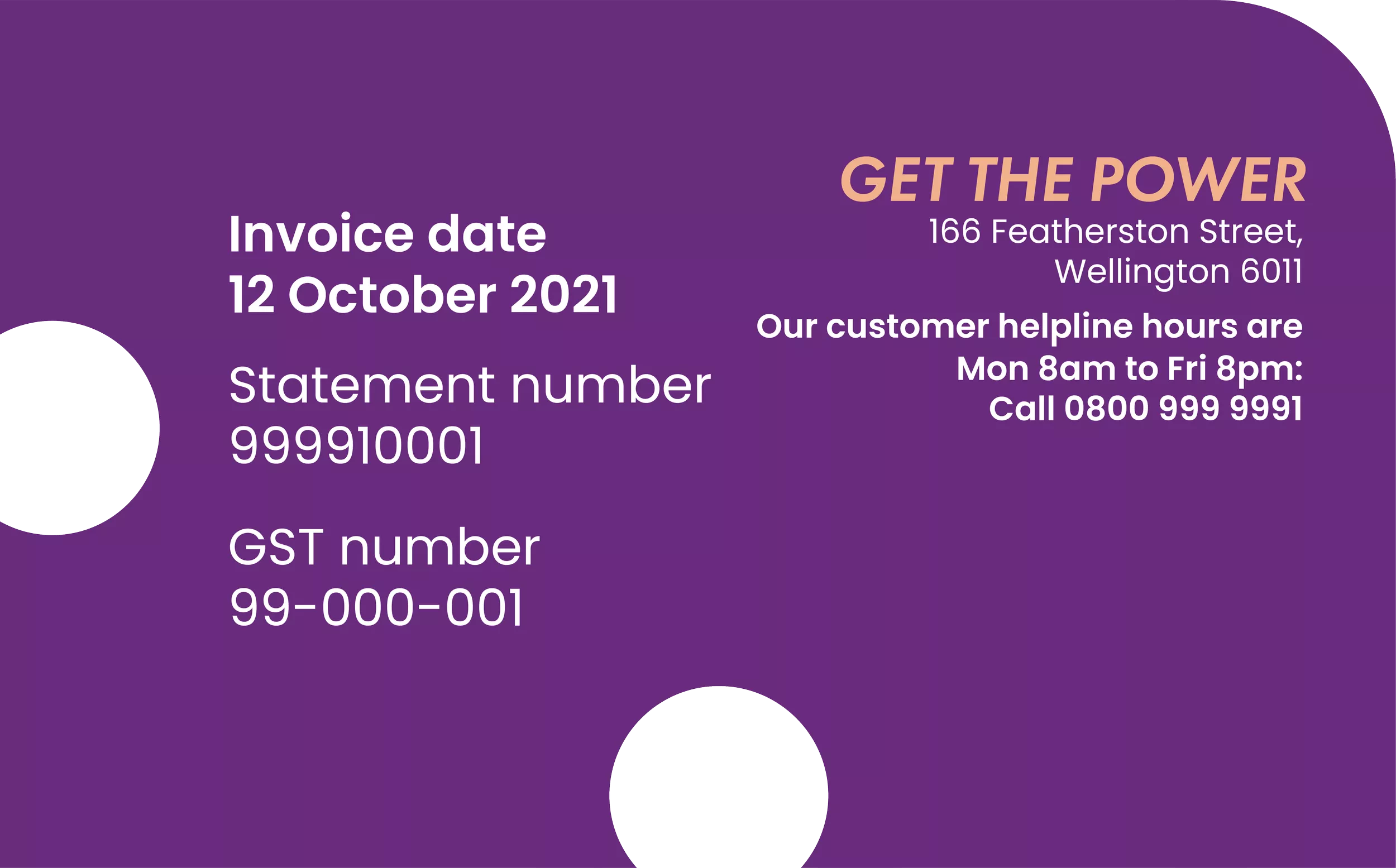
This piece is also pretty easy as it usually just has the power company information. This could be a fancy logo, contact information, and an invoice date which is the day the bill was created.
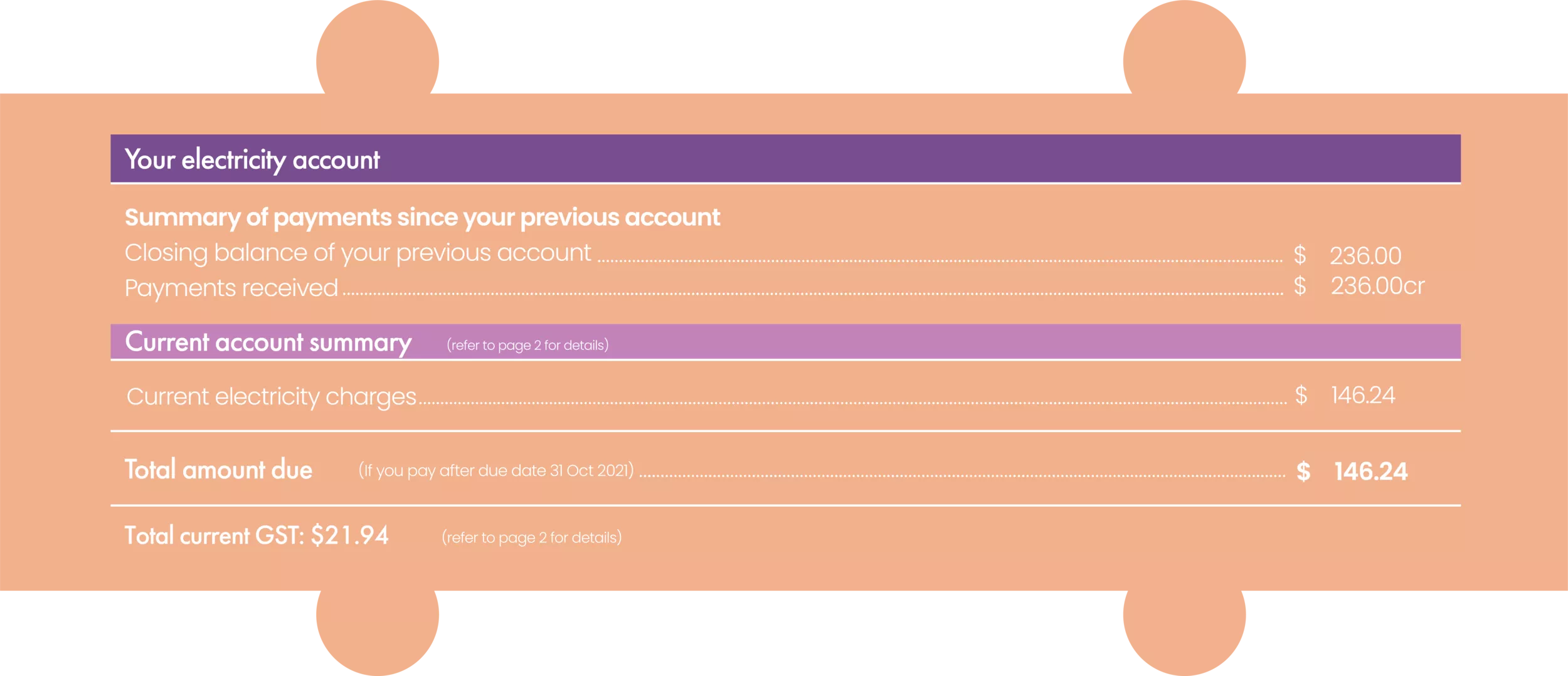
Your bill lists the charges that need to be paid along with any other outstanding charges if you’ve missed recent payments.
If you qualify for any discounts, you’ll usually find that alongside the outstanding amount due.
A very important piece of information on this piece is the due date the bill needs to be paid by. Try your best to pay the bill on time to avoid any late payment fees. If you think you won’t be able to pay your bill for any reason, get in touch with your power company. Your retailer’s support team will be able to offer you support if you’re having trouble paying your bill.
This part of the bill will also include the name of your plan and what period you’ve been billed for. Most power companies will bill you monthly but depending on your plan and how you’re paying you may be billed fortnightly or even weekly.
The plan you’re on might not necessarily be the right one for you. You can use a website like Powerswitch to compare plans and retailers and find the best deal for you.
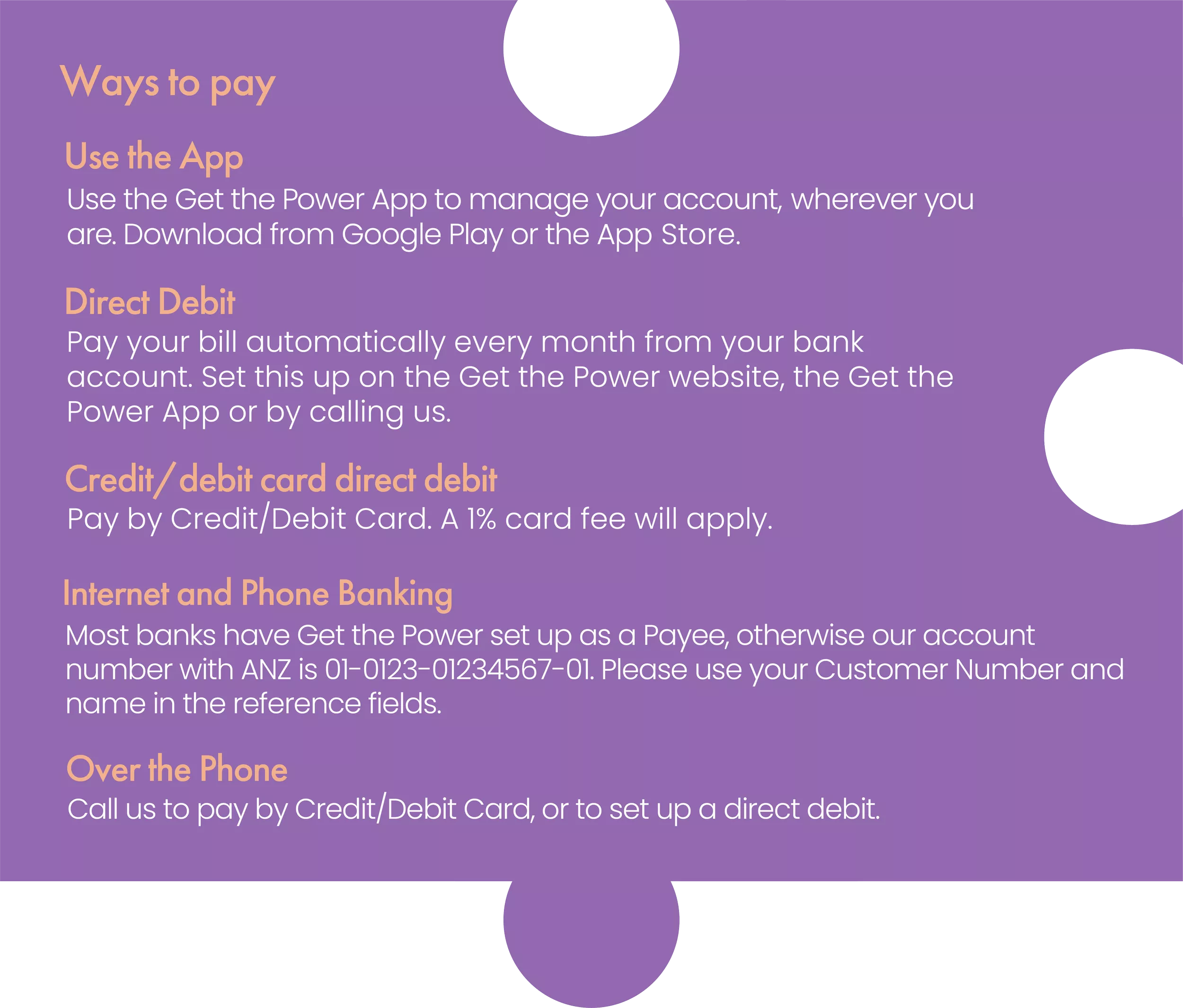
This part of the bill outlines ways you can pay your bill. The easiest way is usually by internet banking these days, but most retailers also accept phone banking, direct debit, and credit or debit card payments.

Some companies have a handy graph of usage which charts how much electricity you’ve used each month so you can see trends over time. These graphs usually show power use increasing over the winter months and decreasing in summer months. This graph is a good way to see if your habits match the usage the power company has recorded and charged you for – if something doesn’t look right call you power company to ask.
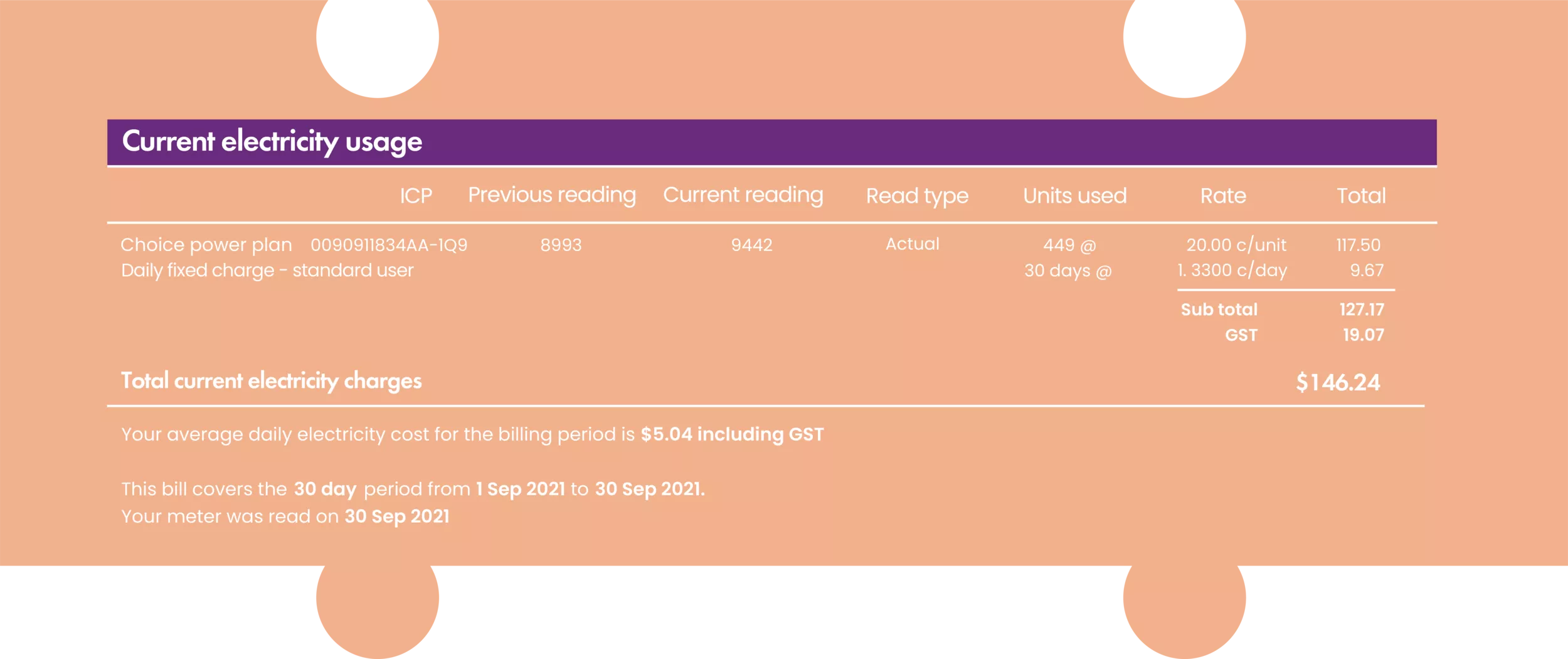
This part of your power bill is confusing at first glance, but is less complicated than you might think.
This piece breaks down how many units of electricity you’ve used and the price of the units, and the price you’ve paid to get the electricity to your house. These two items on your bill are called the “variable charge” and “fixed charge”.
The variable charge is the cost of the power you’ve used, displayed in kWh (kilowatt hours) or sometimes referred to as “units”. This is a measurement of how much power you’ve used during the billing period, and you’ve charged per unit used.
The fixed charge is the cost of getting the power to your house and other essentials like your power meter. Your fixed charge is charged per day is the same regardless of how much power you use.

The most important thing to keep in mind is to get in touch with your retailer if you’re unsure about anything in your bill, if you think something might be wrong, or if you think you won’t be able to pay your bill for whatever reason. Your retailer’s support team will be able to explain your bill to you and can offer you support if you’re having trouble paying your bill.
TIf you’re unable to resolve the issue to your satisfaction, Utilities Disputes provides an independent and free service that can help resolve challenging issues. Find out more at havethepower.nz.

Click here or on the icon to download the puzzle print-out (PDF, 686 KB) »
There’s a lot of different steps taken to get electricity to your home that make up part of your power bill.
Here’s a video to break down what you’re paying for when you pay your power bill.